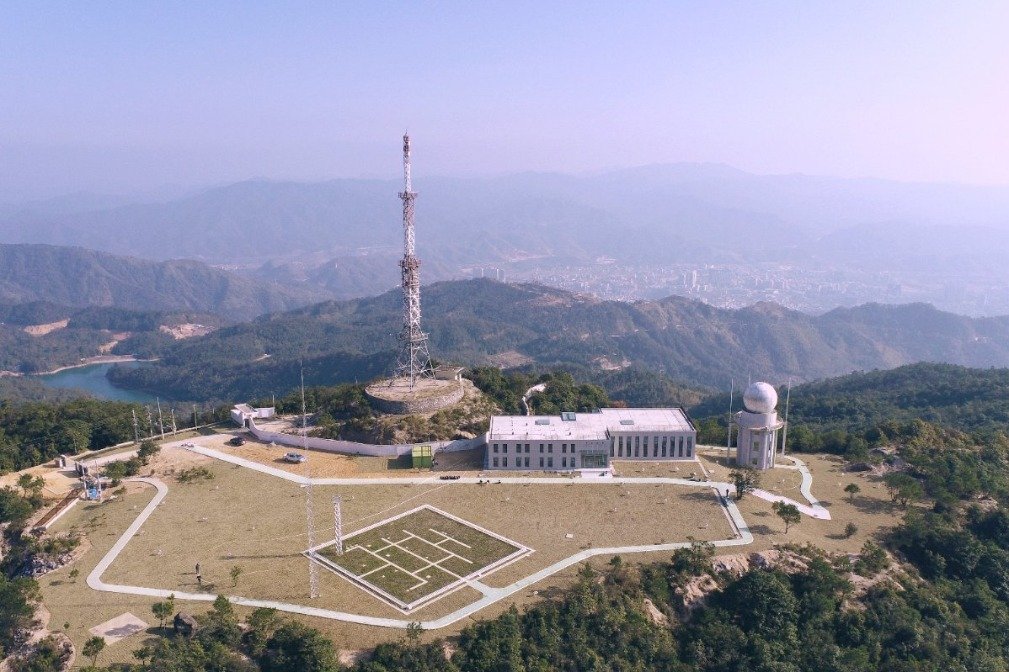Employees of Xinfeng National Atmospheric Background Station are not allowed to prepare meals on the premises. Rather, the food they need must be delivered to the station from the foothills of Yunji Mountain in Xinfeng County, Shaoguan City, Guangdong Province.
Chen Jianwen, party director of the Xinfeng Meteorological Bureau, said: “We do not allow cooking fires inside the station because we need to capture the essence of the atmosphere to the fullest.”
The station will primarily be used to observe atmospheric components closely related to weather, climate, environment, and health, such as greenhouse gases, aerosols, and reactive gases.
The atmospheric observation data collected by the station will provide systematic, continuous and reliable support for research on climate and environmental change in southern China, promote the socio-economic development of the region, and reduce carbon dioxide emissions. It contributes to China’s “dual carbon” goal of achieving. Emissions will peak by 2030 and carbon neutrality will be achieved by 2060, Chen said.
Choosing the location for the atmospheric background station was very difficult, Chen said.
“Unlike common ecological monitoring stations, atmospheric background stations observe atmospheric components that are relatively stable, well-mixed, and far away from human activities and pollution sources,” the party leader said. .
As the country’s eighth and the only national atmospheric background observatory in southern China, Xinfeng Observatory began trial operations last October and has since introduced a comprehensive and standardized observation system.
“This site on Mt. Unji was chosen mainly due to its excellent natural environment and climatic conditions, with no industrial pollution nearby and minimal human interference, making it suitable for the observation of atmospheric components. A strong guarantee will be given,” Chen said.
At an altitude of approximately 1,434 meters, Yunjishan is located at the northern end of the Tropic of Capricorn, where southern sea breezes and northern air currents frequently converge.
According to Yang Tushi, assistant researcher at the Guangzhou Tropical Ocean Meteorology Research Institute of the China Meteorological Administration, the technical methods and equipment used at the observatory are different from those at general observatories due to the special nature of the observation target.
The station is equipped with various high-tech equipment, including a reactive gas online analyzer, which is mainly used to measure the concentration of various reactive gases in the atmosphere, such as nitrogen oxides and ozone, in real time. Masu.
“By studying the chemical behavior and interactions of reactive gases in the atmosphere and identifying and analyzing air pollution sources, we provide valuable data support for real-time monitoring and formulation of air quality by ecological and environmental authorities.” and environmental policy implementation,” Yang said.
According to researchers, China will continue to promote the simultaneous testing, construction and application of 10 new observatories to strengthen the national atmospheric background observation network.
In addition to establishing atmospheric background observatories, the meteorological authorities of Guangdong Province will focus on the prevention and mitigation of meteorological disasters, building ecological civilization, developing ecotourism industry, and marine meteorological services, promoting regional social and economic development. We plan to optimize our weather services in order to
In Yangjiang, a coastal city in western Guangdong province, a weather observatory has been built on the sea to support the country’s disaster prevention efforts.
Data from the observatory can be used for the construction of smart wind farms, maritime traffic management and rescue operations, according to the local weather bureau.
qiuquanlin@chinadaily.com.cn

